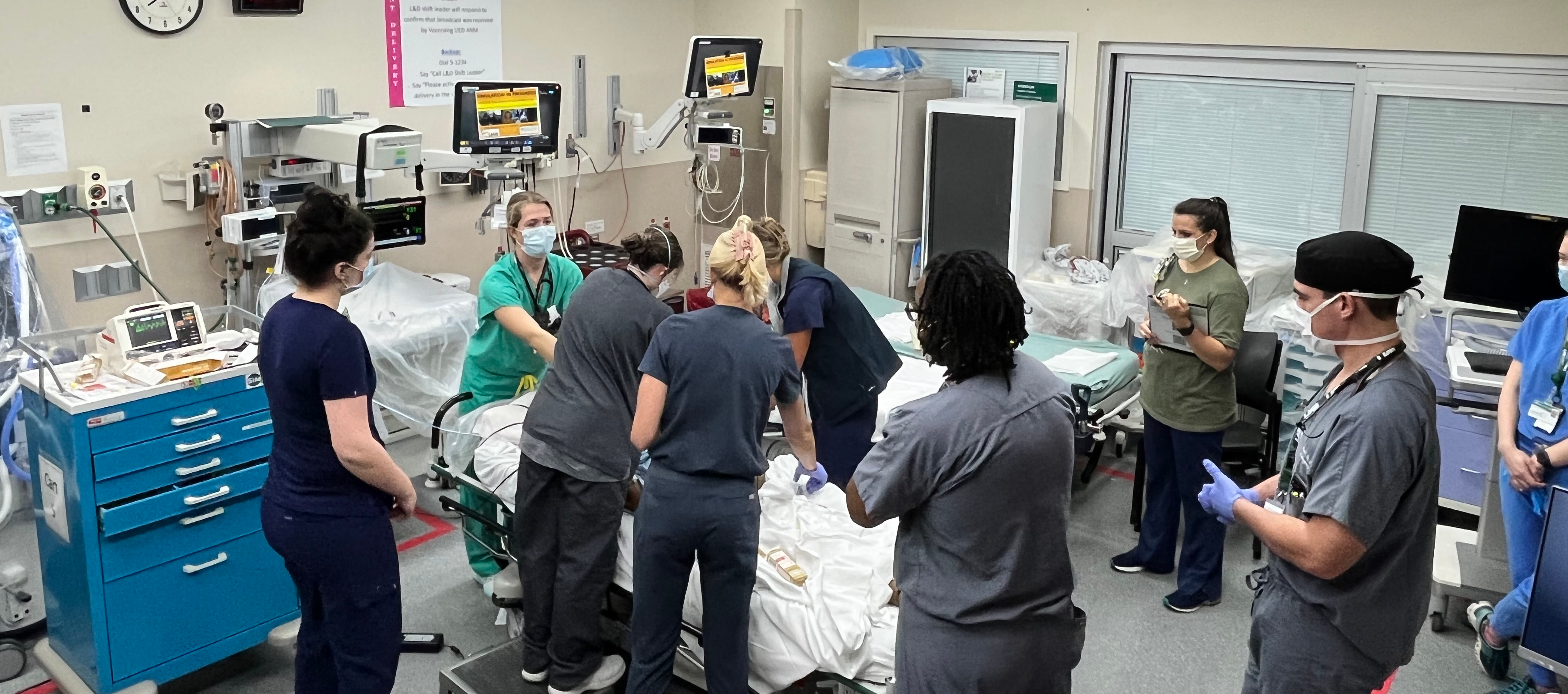In Situ Simulation

In situ (onsite) simulation is a simulation-based learning experience that is integrated into actual clinical environments and involves participants who are on-duty clinical team members during their actual workday. This type of simulation provides a way to test the hospital system and discover opportunities for improving important metrics. In situ simulation also offers an opportunity to identify strengths, weaknesses, opportunities, and threats in clinical systems, the environment, or among teams.
UAB Clinical Simulation offers various types of in situ simulations, including Code Stroke scenarios with standardized patients, malignant hyperthermia simulations, new construction spatial scenarios, and process simulations. Resuscitation simulations are the most commonly performed.
UAB Clinical Simulation has consistently been performing various in situ simulations throughout inpatient and ambulatory areas. These valuable services will continue to be provided at main, Highlands, TKC, Whitaker, and outlying UAB Clinics (20th Street Urgent Care Clinic, Leeds Clinic, Gardendale Clinic, and Hoover Clinic).
International Simulation Data Registry
UAB Clinical Simulation participates in the International Simulation Data Registry (ISDR). The goal of this registry is to capture and compare simulation data across institutions. The American Heart Association’s Get With The Guidelines® resuscitation program is the only national registry for in-hospital resuscitation events. This registry provides data that have resulted in practice changes and publications in peer-reviewed journals. Similarly, the ISDR aims to improve the quality of resuscitations and outcomes by collecting and comparing simulated resuscitation data. Our goal is to contribute data to the ISDR for the sake of improving our simulation community. We also hope to contribute to the forward trajectory of improving resuscitation outcomes by using simulation as a technique within our institution.
We encourage you to participate in these simulations when they come to your area. In situ simulations help us practice and improve our teamwork, communication, and clinical skills for the benefit of our patients.
Expectations
Please participate in your normal role for managing the care of a patient.
- If you would call a code, please push the button or follow your procedures for initiating the Code Team.
- If you would do chest compressions, please do quality chest compressions. The manikin measures the quality of chest compressions.
- If you would give assistance with ventilations, please give adequate ventilations. The manikin can be intubated and records the quality of assisted ventilations.
- If you would give medications, please ask for them and push them. We use simulated medications to avoid waste.
- These exercises are unannounced and may occur 24/7.
- These exercises occur entity-wide in inpatient, outpatient, and non-patient care areas.
- The goals are to improve our teamwork and communication in caring for our patients and to identify latent safety threats or system issues that can affect patient safety.
- These exercises last less than 30 minutes, including the debrief and written evaluations.
- These exercises are recorded, and quality metrics are shared with UAB Patient Safety.
- These exercises may include a manikin patient. The manikin blinks, breathes, has pulses, and can have most medical procedures performed on him, including defibrillation.
- These exercises may include a human actor as a simulated patient.
- These exercises may include an embedded simulation participant (ESP) who is present to ensure the safety of the team and the patient.
Benefits
- Enable learners to improve familiarity with work environment and processes
- Identify strengths, weaknesses, opportunities, and threats in clinical systems, the environment, and among teams
- Improve interprofessional teamwork and communication between actual working teams
- Learning environment is identical to reality
- Instills confidence in patients’ family and friends when staff are seen practicing simulations
How do I get involved?
You can get involved by collaborating to create an in situ simulation in your area.
If you are interested in collaborating with the UAB simulation team to create an in situ simulation, please contact us at simulation@uabmc.edu.
